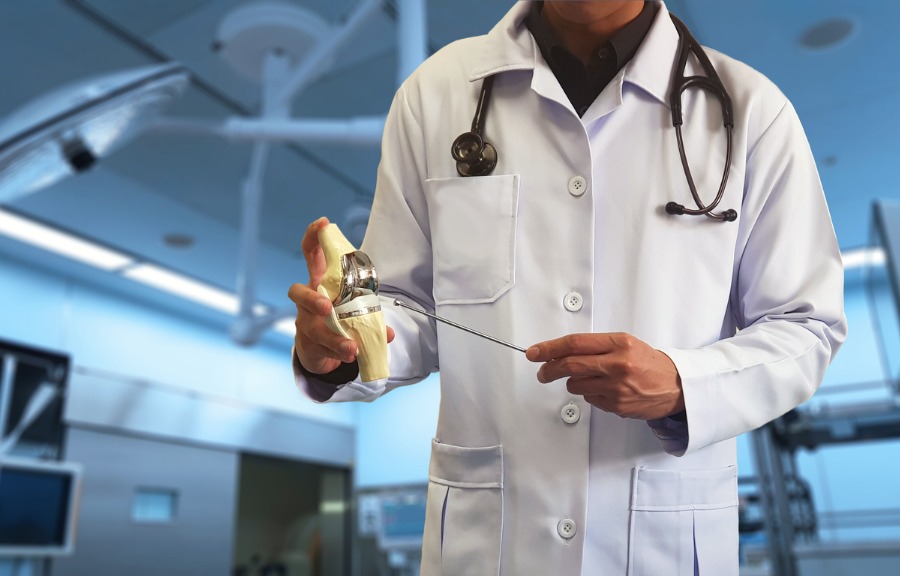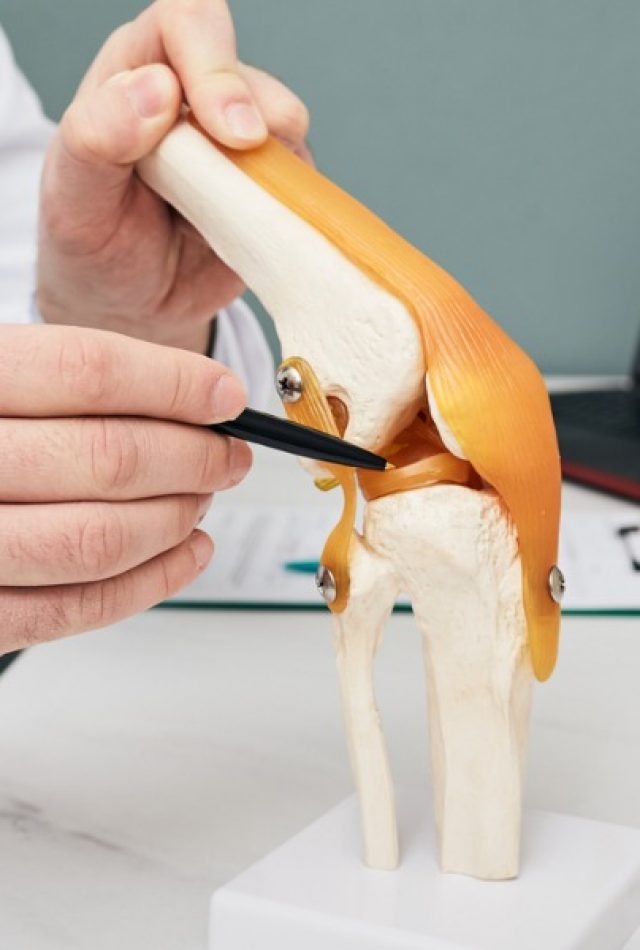Total Knee Replacement
Total knee replacement is performed to treat and to restore the function of painful, disabled knee joints. The affected knee joints are replaced by artificial knee joints, a combination of metal and plastic. These are available in various designs. The metal meets the end of the bones and a plastic spacer acts as a buffer between them.



